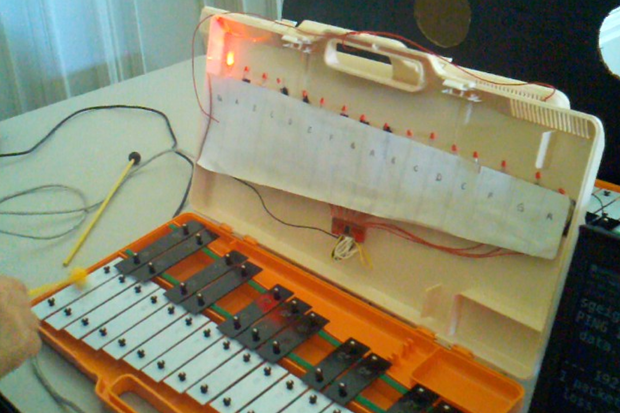Somehow I missed a lecture and demo of this new networking technology in Austin back in May: Internet Protocol Over Xylophone Players (IPoXP) (PDF whitepaper), which puts a human element in the middle of sending IP packets from one computer to another. From Wired UK:
As an LED lights up, the human participant strikes the corresponding key on the xylophone. Piezo sensors are attached to each xylophone, so that they are able to sense when a note is played on the other xylophone. The Arduino for the receiving computer senses the note and then converts it back into hexadecimal code. And when the second computer sends a return packet, the order of operations is reversed.
The data can be sent at a rate of roughly 1 baud, which is still faster than the earlier, um, IP over Avian Carriers technology.
Assuming the musicians don’t get bored. It takes about 15 minutes to transmit a single packet, assuming the musician doesn’t hit any wrong notes. That’s rare, though, apparently. Geiger told NetworkWorld: “Humans are really terrible interfaces.”
Pedant note: yes, they are using a glockenspiel in the photo above, not a true xylophone, but I guess X is a cooler letter to have in your acronym…
(Via ACM Tech News)

